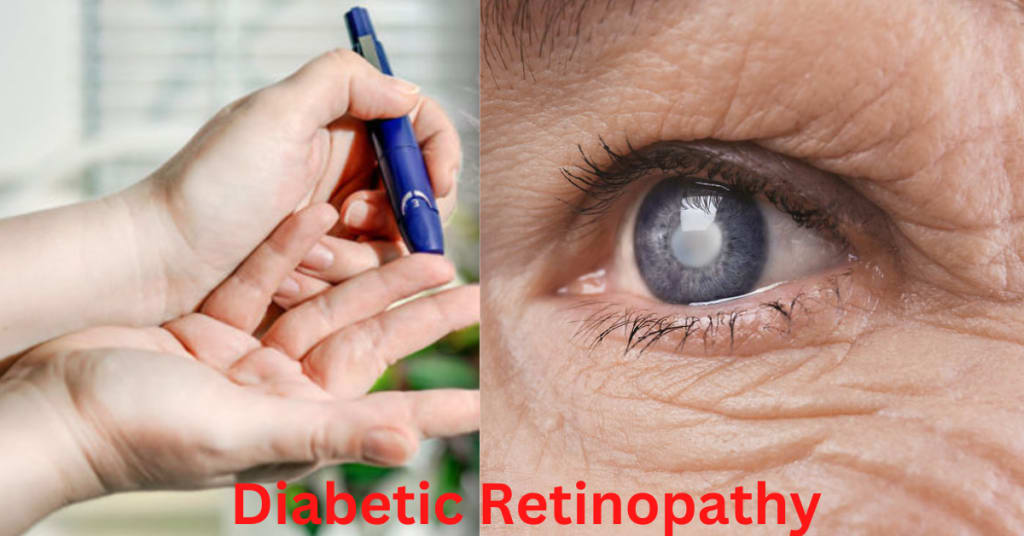Diabetic Retinopathy Stages
The 4 Stages of Diabetic Retinopathy

Diabetic Retinopathy Stages Summary
Patients with mild NPDR do not need to be referred to a retina specialist unless they are concerned about or have confirmed a diagnosis of DME.
Patients with moderate NPDR have a 12% to 27% risk of developing PDR within 1 year and should be seen every 6 to 8 months.
Patients with severe NPDR have a 52% risk of developing PDR within 1 year, are at a high risk of disease progression and permanent vision loss, and are most likely experiencing neuropathy elsewhere.
Diabetic Retinopathy Definition
Diabetic retinopathy is an eye disease caused by high levels of glucose in the blood. The high levels of sugar for a prolonged duration lead to complications of the eye. There are many complications caused by diabetes in the eye. There are four main diabetic retinopathy stages that can be more easily treated if detected early, especially through preventive measures.
Causes Of Diabetic Retinopathy
There are many complications caused by diabetes in the eye. These can be divided as
Common Causes:
Retinopathy
Iridopathy
Unstable refraction
Uncommon Causes:
Recurrent styes
Xanthelasma
Accelerated senile cataract
Neovascular glaucoma
Ocular motor nerve palsies
Reduced corneal sensitivity
Rare Causes:
Papillopathy, the light near dissociation, acute onset cataract, rhino orbitalMucor mycosis, etc.
One of the most common complications of diabetes in the eye is diabetic retinopathy. It is a preventable cause of blindness. In the general population, the prevalence of diabetes is 40%. It is more common in type 1 diabetes than in type 2 diabetes.
According to the American Academy of Ophthalmology, the high levels of sugar in the blood cause the vessels to swell, become leaky, and block, later on, compromising the blood supply to the retina. Early detection is the key to preventing blindness. The management of diabetic retinopathy stages depends upon the stage of retinopathy
Risk Factors Of Diabetic Retinopathy:
Duration of diabetes:
The duration of diabetes is the most important factor. For patients diagnosed with diabetes before the age of 30 years, the risk of developing retinopathy after 10 years is 30% while in patients diagnosed with diabetes after 30 years is 90%.
Poor control of diabetes:
The tight control of diabetes instituted early can prevent or delay the progression of diabetic retinopathy. However sudden tight control may be associated with the progression of retinopathy in the near term.
Pregnancy:
Pregnancy is sometimes associated with the progression of DR. The cause includes greater pre-pregnancy severity of DR, poor pre-pregnancy control of diabetes and pre-eclampsia. The risk is more during the first trimester. Diabetic macular edema subsides after the pregnancy and need not be treated if it develops in later pregnancy.
Hypertension:
Hypertension is common in diabetic patients. Control should be below 140/80. Tight control is highly beneficial in the progression of DR.
Nephropathy:
Nephropathy is associated with greater progression of DR. Treatment of renal disease is associated with improved retinopathy and better response to photocoagulation.
Diabetic Retinopathy Stages
Diabetic retinopathy stages develop over time.If you’ve been diagnosed with diabetic retinopathy after a diabetic eye screening, Making lifestyle changes and getting treatment can help to improve the situation and prevent it from getting worse.
The main diabetic retinopathy stages are described below. You don’t have to experience them all. The most effective way to protect your vision from diabetic retinopathy is to maintain good control of your diabetes.
Stage 1: Mild Nonproliferative Diabetic Retinopathy
The first stage is called background retinopathy. It is characterized by microaneurysms, dot and blot hemorrhages, and exudates. These are generally the earliest signs of diabetic retinopathy and may persist till the end. The microaneurysm is a tiny bulge in the retinal blood vessels. They are prone to leak easily. Patients in this stage have no symptoms, however, the range of review is 6-12 months, depending on the severity, systemic factors, and patient’s personal circumstances.
Stage 2: Moderate Nonproliferative Diabetic Retinopathy
I have write an article about 4 stages of diabetic retinopathy.
About the Creator
sadia ayaz
My name is Dr. Sadia Ayaz and I am an ophthalmologist and eye surgeon. My medical degree is from Pakistan, I have done FCPS-1 / IMM from the College of Physicians and Surgeons Pakistan.





Comments
There are no comments for this story
Be the first to respond and start the conversation.